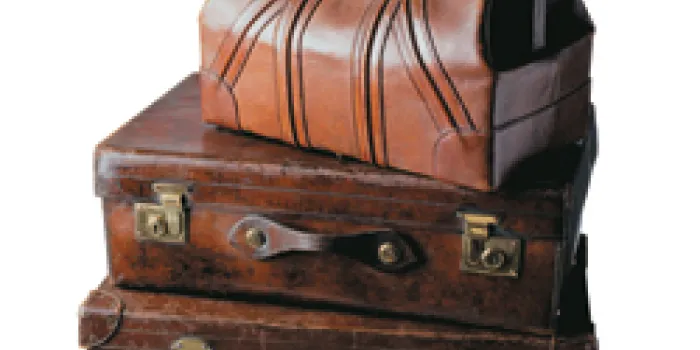Hopping a plane can be stressful nowadays, as you deal with long check-in lines, baggage fees and enhanced security. But for people with hemophilia and other bleeding disorders, the biggest concern is often how to transport their factor products and supplies safely to their destination. Here’s what you need to know about traveling with medication.
After the discovery of a 2006 London terrorist plot involving liquid explosives, airlines limited the amount of liquids, aerosols and gels travelers can carry on board airplanes. This regulation particularly affects passengers who need to keep medical supplies with them. This includes clotting factor products, needles, syringes and other supplies required for treatment of bleeding disorders. Being prepared with complete information about your medications, and packing them properly, will go a long way toward smoothing the security screening process.
[Steps for Living: Traveling When You Have a Bleeding Disorder]
Medical Exceptions
The Transportation Security Administration (TSA) has implemented the 3-1-1 rule. This means each traveler is allowed to carry travel-sized toiletries—each in three-ounce or smaller containers—that fit in one quart-sized, clear plastic, zip-top bag through security checkpoints. After passing through security screening, passengers may purchase and carry on drinks and other items in the secure boarding area.
Exceptions to the ban include appropriately labeled prescription medicines, baby formula and breast milk (if traveling with a baby or toddler), up to five ounces of diabetes glucose treatment (including juice), and up to four ounces of essential nonprescription medications. The TSA requires that prescribed medications have a professionally made label identifying what they contain. The label must match the name on the passenger’s ticket, according to TSA spokeswoman Amy Kudwa.
“Several variables would affect what people with a bleeding disorder might take on a flight,” says Paul Clement, a high school science teacher in Southern California who has a son with severe hemophilia A. Clement is an active member of the bleeding disorders community and contributes to the Parent Empowerment Newsletter published by LA Kelley Communications, Inc.
What to Pack in Your Carry-On
- When deciding what to pack in a carry-on bag, you should consider:
- The type and severity of the bleeding disorder
- The climate in the departure and arrival cities
- The type of bleeds the person with the bleeding disorder typically experiences
- The length of time you will be away from home
- Your destination (Will you be in a developed or developing country? Is there is a hemophilia treatment center [HTC] nearby?)
- Your accommodations (hotel, motel, youth hostel, cabin or campsite)
It can be helpful to also anticipate flight delays or missed flights and to pack accordingly. According to Clement, most people with severe hemophilia A or B should carry:
- Factor concentrate (a lyophilized powder in a small bottle) in original box packaging
- Diluent (sterile water to reconstitute the powdered factor). For most factor products, the diluent volume varies from 2.5 ml to 10 ml (10 ml is one-third of a fluid ounce)
- A reconstitution device or transfer needle and filter needle, plus a butterfly needle (for infusion of factor), for each dose of factor
- Syringes
- Alcohol swipes
- Sharps container
People who have children with ports will also need to pack disinfectants to be used prior to infusions and sterile saline and/or heparin for flushing the port after an infusion. Some use EMLA cream on children prior to infusions.
Travelers with inhibitors and those with HIV, hepatitis C or other conditions will need to pack additional medications and supplies. Medications may be easier to carry onboard than items such as gel ice packs to treat minor internal bleeds or refreezable cooling devices to store medications at appropriate temperatures.
Keeping Factor Products Safe
Most factor products can be stored at temperatures up to 77–86 degrees Fahrenheit for approximately three months, so gel or ice packs may not be necessary. Each product has different requirements, however, so check the product manufacturer’s Web site under “Prescribing Information.” Once you remove factor from the refrigerator, do not refrigerate it again later. Gel packs can be slipped into checked baggage prior to checking it. Factor and diluent can be refrigerated before packing and then packed into a small, insulated travel kit specially designed for factor transport (ice may not be necessary).

Factor products should never be packed in checked luggage, because wide temperature fluctuations may affect the potency of the factor, rough handling may break the glass containers and your luggage could be delayed or lost. A homecare company or specialty pharmacy may be able to deliver the product to your destination, but your HTC probably won’t mail it to you. If you’re thinking of mailing it to yourself, check with the Postal Service about restrictions.
Negotiating Questionable Items
“It’s very difficult to anticipate all eventualities when we make the prohibited item list,” Kudwa says. “We try to make common-sense decisions for passengers who have medical conditions.”
The conversation about questionable items “will be had at a checkpoint with a security officer,” she continues. “Supporting information and documentation would help in that process.”
The National Hemophilia Foundation (NHF) advises that when traveling with clotting factor, passengers should bring a prescription from their doctor that includes contact information, and a travel letter from the doctor or HTC with a brief description of their condition and the need for the medication.
“Always make sure all your products are together in a separate carry-on bag so they can go through all of your materials at once,” suggests Neil Frick, NHF vice president for research and medical information. “It just makes it simpler for them to go through the letter to see what you actually need to treat yourself.” If traveling overseas, especially a developing country, it is advisable to have your travel letter translated into the local language. Don’t assume customs agents in all countries read English. Consider carrying a flash drive with the contact information and maps of HTCs or hospitals in the countries you will be visiting, along with digital copies of your travel letter, prescriptions, health insurance information and any other pertinent medical records. Saving the files in rich text format (RTF) allows them to be opened by a wide range of word processing programs.
You can request that TSA officers visually inspect your medication and supplies instead of putting them through the X-ray. Frick also recommends that you talk to your HTC about what you should do when traveling. “There may be specific treatment issues, in terms of inhibitors or adjusting prophylactic schedules to different time zones, or in case there is an emergency,” he says. “Also, you always want to have your medical alert bracelet or ID with you.”
After you’ve worked out your travel plans with your HTC, make sure treatment is available at your final destination. Be sure to bring enough product for the time you’re going to be gone, Frick says. Remember to bring your insurance card. Before you leave, make sure your insurance covers you in the state or country where you’ll be traveling. If traveling overseas, check that your insurance covers medical evacuation in case of an emergency.
TSA security officers may not recognize that a passenger has a bleeding disorder or other “invisible” medical condition. According to the TSA Web site, “you can, but are not required, to tell the security officer if you have a medical condition or special situation which requires extra care, sensitivity or special treatment.” For example, in case you had a joint bleed or recent surgery, if you undergo a personal search, inform the officer that you are in pain and explain the areas that will require greater care. The officer should avoid touching the wand on sensitive areas and use light pressure when inspecting them.
“The best advice to travelers with medical conditions is to be prepared,” Kudwa says. “TSA and the airlines do an excellent job of keeping their Web sites up to date. There are toll-free customer contact numbers for TSA and just about every airline.”
Frick also recommends checking with your airline two days before your trip for its specific regulations.

